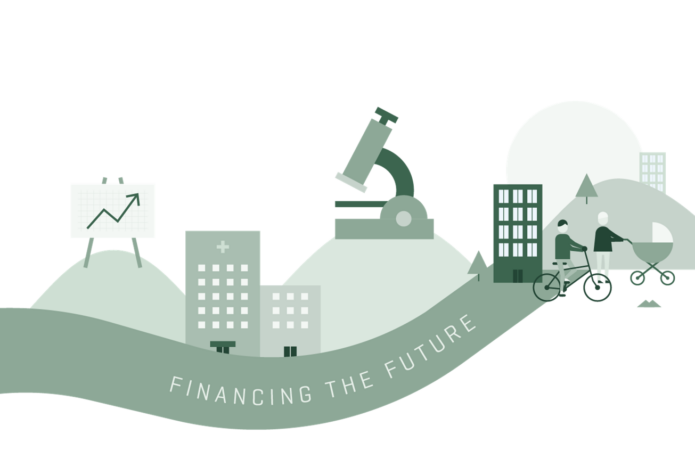More than money – A broader view on financing productivity gains

NIB sees productivity as a key driver for prosperity and a core pillar for strong, well-functioning societies. That is why we extend our analyses from direct impacts to the wider impacts for society. We are looking for social value creation as much as for pure economic value creation.
“Productivity isn’t everything, but in the long run it is almost everything. A country’s ability to improve its standard of living over time depends almost entirely on its ability to raise its output per worker.” —Paul Krugman
Nothing matters more for living standards than productivity growth. Higher productivity boosts income levels and gives more options for, among other things, redistributing wealth as well as improving our ecological and social environments.
Productivity measures how efficiently production inputs, such as labour and capital, increase the value of any given level of output.
The first view of productivity is that investments and the resulting accumulation of capital explains productivity growth in the short run and technological change in the longer run. However, this view fails to explain why we have huge differences in living standards between countries.
A second view tries to fill this gap. It emphasizes that investments and innovation require stable political and institutional frameworks. Several studies indicate that investments and innovation require stable political and institutional frameworks. Such frameworks should promote markets that have a level playing field and equal economic opportunities for the majority of people. Consequently, the claim is that cultural and political constraints to economic activities explain most of the differences in economic development between countries.
Measurement: The micro-macro problem
Statistical measures of productivity are good, albeit imperfect, indicators of a country’s economic performance. Usually the measurements give us a helicopter view of how efficient the economies are. However, they are less useful in explaining the driving factors behind the trends. This is the micro-macro problem in measurement. Economies are complex systems where productivity gains from, for instance, technological progress in companies and sectors are hard to trace at a macro level.
An example of this is the difficulty of explaining the slowdown in productivity growth in developed economies during the last decade by simply using macro-level productivity statistics.
Investments are a fundamental part of growth processes and industrial dynamics. It is therefore useful to define investments more broadly to include any expenditure with productive payoffs in the future. Measures of human capital and R&D expenditures are included in productivity analyses, in addition to investments in machinery, equipment and other forms of fixed capital.
Distribution of benefits
In addition to considering investment concepts more broadly, the distribution of benefits from investments is wider. While most benefits from investments accrue directly to investors, there are often benefits distributed more generally in society. Examples of such benefits are positive environmental impacts and spill-over effects from investments in innovation.
When considering the socially optimal scope of investment activities, these broader benefits are as important as the direct and private benefits. Failing to do so may lead to underinvestment in projects with significant benefits for the society.
When assessing productivity impacts of investment projects, NIB collects quantitative and qualitative information on how investments affects the operational efficiency and market conditions of our customers. In most cases, the benefits illustrate those of our customers in terms of improved cost efficiency, economies of scope and scale, as well as higher product and/or service quality.
These impacts are the foundations for the assessment of the benefits that extend beyond the project owner. These benefits include potential knowledge spill-over across companies in business clusters and the effect of projects on the degree of competition in the member countries.
NIB finances the future
NIB finances projects that improve productivity growth and bring widely distributed benefits to the Nordic and Baltic countries. The Bank’s financing activities are aligned with the general idea that investments drive productivity growth, and hence, prosperity.
The emphasis on the environment and widely distributed economic benefits implies that NIB has a broader view on the return of investments than commercial financiers have. The broad perception of the return of investments complements the financial markets, and help facilitate funding to investment projects that sustainably increase living standards in the Nordic and Baltic countries.
NIB’s loan portfolio can be categorised according to a set of drivers of productivity growth. To support the productivity of the Nordic and Baltic countries, NIB directs financing to projects that focus on:
• Technical progress and innovation
• Human capital and equal economic opportunities
• Improvements in infrastructure
• Market efficiency and business environment
A large part of NIB’s loans to corporates, finance projects that support technical progress in the member countries. These loans consist mostly of investments in modern production facilities and in R&D activities.
Loans that support infrastructure development remove logistical frictions in markets and increase efficiency of regional markets while supporting local business environments.
A significant proportion of infrastructure investments involve upgrades in educational and healthcare infrastructure, which have a significant role in the development of human capital and promote equal economic opportunities in the Nordic Baltic countries.

Ville Mälkönen
Senior Economist at NIB